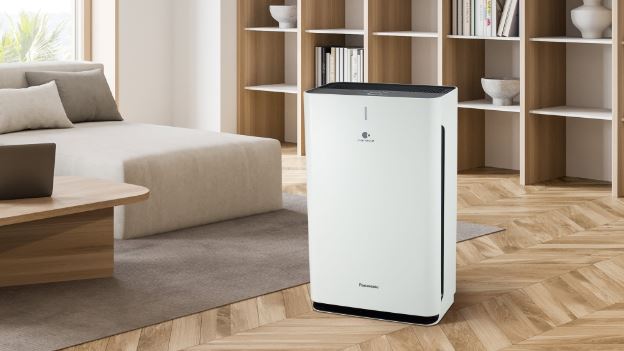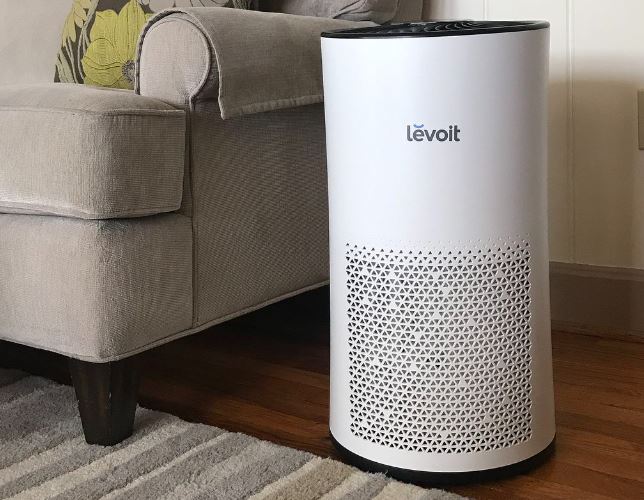HEPA Filters Explained: Your Key to Cleaner Air
HEPA Filters Explained: Your Key to Cleaner Air
Blog Article
In today's health-focused society, the quality of the air we breathe has taken center stage for individuals across the globe. With increasing environmental pollution and a deeper insight of the impacts of indoor air quality on our health, it's no surprise that the air purifier market is booming.
Air purifiers are appliances that remove contaminants from the air in a given area, enhancing the air we breathe indoors. They are ideal for those with allergies, asthma, or respiratory concerns as they can significantly reduce the amount of allergens, pollutants, and irritants in the air. Even healthy individuals can rely on the added protection of air purifiers, as they provide reassurance and safeguard against airborne diseases.
This comprehensive overview will explore in detail the world of air purifiers, exploring their benefits, the array of models available, essential factors when selecting the right model, and how to get the most out of your device. By the end, you should have a comprehensive understanding of air purifiers and be able to decide confidently about whether investing in one is the best option for you and your family.

Unraveling Indoor Air Contaminants and Their Effects on Well-being
To understand why air purifiers are essential, it's key to comprehending the kinds of pollutants they target and the likely impact of contact with these pollutants.
Indoor air pollutants can be broadly grouped into three primary types:
- Airborne Particles: This includes solid and liquid droplets floating in the atmosphere. Examples include pollen, smoke, dust, pet dander, and mold spores, to name a few. Particulate matter can lead to respiratory complications and set off allergic responses.
- VOCs: A Concern for Indoor Air: VOCs are gaseous compounds released from solids and liquids. Sources of VOCs include cleaning agents, paints, aerosol sprays, pesticides, and similar products. Exposure to VOCs can lead to irritation of the eyes, nose, and throat, as well as headaches and nausea.
- Biological Contaminants: These include bacteria, viruses, mold, and mildew. They can cause a spectrum of health concerns, from mild allergic reactions to severe infections.
The effects of these pollutants on human health can greatly vary. For people with respiratory issues or a vulnerable immune system, exposure to indoor air pollutants can lead to serious health issues. Even those in good health, prolonged exposure over time to certain pollutants can contribute to the development of respiratory issues and other health problems over time.

The Science Behind Air Purifiers
Air purifiers use a variety of physical and chemical processes to trap and eliminate airborne pollutants. Understanding the underlying principles employed by purifiers will help you understand their efficiency and the variety of options on the market.
Here are the primary mechanisms and innovations used in air purifiers:
- Mechanical Filtration: This is the most widely used approach used in air purifiers. It involves using filters designed to trap airborne particles as air is drawn into the purifier. The filters can be made from various materials, each designed to capture specific types of particles. For example:
- Pre-filters: The First Line of Defense: These are usually the initial barrier, capturing larger particles like dust, hair, and similar larger particles.
- HEPA Filtration: Unparalleled Performance: HEPA filters are highly effective at trapping ultrafine particles, including dust mites, pollen, bacteria, and viruses. To be labeled a bona fide HEPA filter, it must effectively capture particles as small as 0.3 microns, with a minimum efficiency of 99.97%.
- carbon filtration: These filters are designed to adsorb odors, VOCs, and gaseous pollutants.
- The Power of Ionization: Ionizers use electricity to create ions with a negative charge, which bind to particles in the air. The particles become charged, causing them to stick to surfaces or the purifier.
- Ozone Generators: Some air purifiers use ozone as a potent disinfectant to destroy contaminants. While effective, ozone can also be harmful to human health so these types of purifiers should be used with care and only when no one is present.
- UV Light: Shining a Light on Purification: UV light can be used to destroy biological contaminants like bacteria, viruses, and mold spores. UV light is commonly paired with filtration to eliminate particles, while UV light ensures any remaining biological contaminants are destroyed.
Selecting the Perfect Purifier
With a wide array of options available, selecting the ideal air purification system can be a daunting task. It's important to consider several factors to ensure you make the best decision for your unique requirements and space.
Here are some essential factors to weigh:
- Sizing Up the Room: Air purifiers are typically rated according to room size, so it's important to choose a model that can efficiently purify the air in the designated space. Most purifiers will list a maximum room size or a Clean Air Delivery Rate (CADR), which indicates the volume of filtered air delivered per minute.
- Type of Contaminants: Identify the specific pollutants you want to target. If you suffer from allergies, look for a purifier with a HEPA filter. For odor removal, consider a model with a carbon filter. If you're concerned about pathogenic microorganisms, a purifier with UV light disinfection might be best.
- Whisper-quiet Performance: Air purifiers can produce different noise levels, so if you plan to use it in a quiet bedroom or tranquil space, look for models with a sleep mode or quiet setting.
- Maintenance and Costs: Consider the ongoing costs and maintenance requirements of the purifier. HEPA filters, for example, typically need to be replaced every 6-12 months, depending on use and environmental factors. Factor in the cost of replacement filters when making your choice.
- Enhancing Your Experience: Many purifiers offer innovative smart capabilities like automatic modes, air quality monitoring, and wireless control, allowing remote control and monitoring. These features can enhance the convenience and effectiveness of your purifier.
Unlocking the Full Potential of Your Air Purifier
Once you've made your selection and installed it, there are several things you can do to ensure it operates at peak performance and delivers the greatest advantages:
- Place it in the Right Location: Position your purifier in an central location, free from obstacles, to ensure efficient air circulation. Avoid placing it near external openings as drafts can interfere with its performance.
- Round-the-clock Operation: For the best results, it's recommended to run your purifier around the clock. Many models have low-energy settings or automatic modes that adapt to the air quality, so you can maintain clean air without running up a huge energy bill.
- Filter Maintenance: Regularly check and replace filters as recommended by the manufacturer. Over time, filters become filled with trapped particles, impacting performance. Mark the date of replacement on your calendar so you don't forget.
- Reducing Indoor Contaminants: Alongside using an air purifier, take steps to minimize indoor air pollutants. This could include frequent dusting and vacuuming, opting for natural cleaning solutions, and reducing chemical or aerosol usage. Report this page